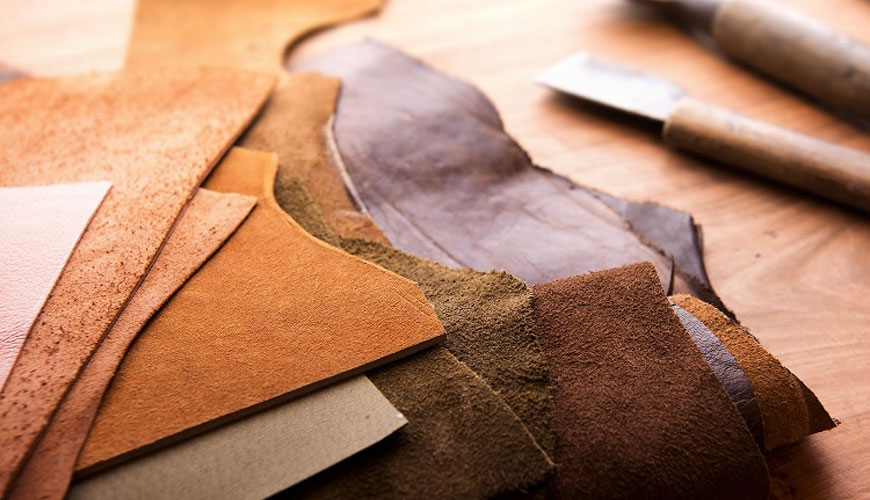

The EN ISO 17070 standard, developed by the International Standards Organization (ISO), provides a test method for determining the content of tetrachlorophenol, trichlorophenol, dichlorophenol, monochlorophenol isomers and pentachlorophenol salts and esters in leather products.

EN ISO 17070 describes a procedure in which chlorinated phenols are acetylated prior to chromatographic detection and the amount of chlorinated phenyl acetate detected is measured by means of an internal standard correction.
The ISO 17070 standard specifies a method for the accurate measurement of the color of finished leather with an instrument. The standard describes the general concepts of color measurement applied to leather and the calculation of differences in color. Accordingly, the D65 light source should be used as the standard light source for the leather industry, the D65 light source should be used as standard conditions for 10 degree color matching, the reference light source for the definition of daylight simulators and metamerism analysis, and the CIEDE2000 should be used as the color difference formula. D65 represents outdoor daylight at cloudy noon and is a standard light source widely used in the textile industry for color evaluation. Metamerism is when two colors that match similarly in one light source look different under another light source. In other words, it is the appearance of a color in different colors and tones under different light sources or the appearance of two different colors in the same color under a certain light source.
A chlorophenol is any phenol compound containing one or more covalently bonded chlorine atoms. There are mainly five basic types of chlorophenol. These are tetrachlorophenol, trichlorophenol, dichlorophenol, monochlorophenol isomers and pentachlorophenol. Chlorophenols are produced by electrophilic halogenation of phenol with chlorine. Most chlorophenols are solid at room temperature. It has a strong, medicinal taste and odor. Some chlorophenols are used as pesticides and herbicides, while others are used as antiseptics and disinfectants. Among them, the most important compound is pentachlorophenol. It is an aromatic compound with chlorine and is widely used as a fungicide. It is also used for paint, adhesive and insulation purposes.
In short, chlorophenols are man-made chemicals that have historically been used as pesticides. It is used as a preservative to protect leather and textile materials from fungi and bacteria during storage and transportation. However, the International Agency for Research on Cancer has classified this compound as a possible human carcinogen.
Among the services provided by our organization within the framework of material testing services, there are also EN ISO 17070 standard tests.
To get an appointment, to get more detailed information or to request an evaluation, you can ask us to fill in our form and reach you.